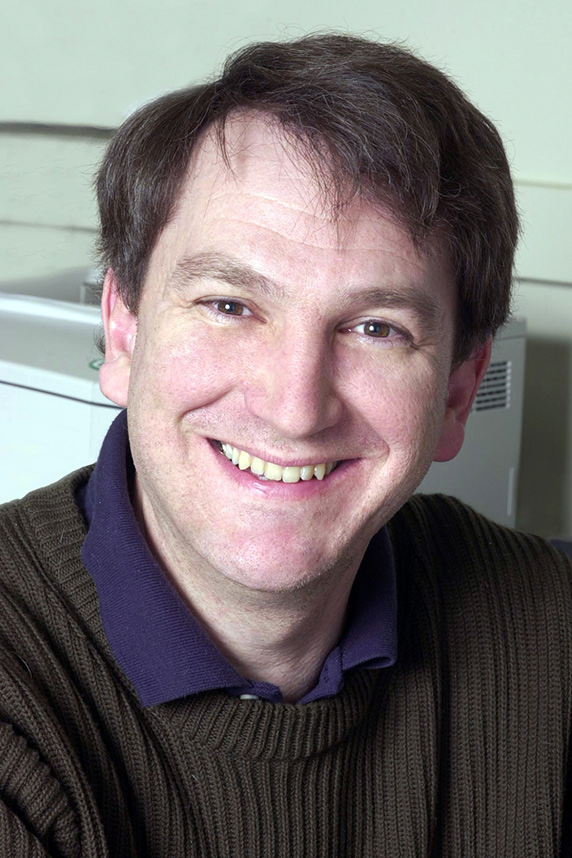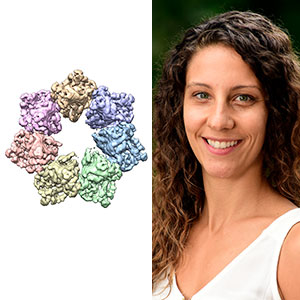Mitochondria generate energy for cells and play important roles in metabolism, immunity, calcium signaling, and other processes, but they must interact with other organelles to function properly. Disruptions in such biological interaction can lead to cancer and neurodegenerative diseases. A new research project overseen by NIEHS could shed light on the important interplay between mitochondria and other organelles, and how errors can pave the way for ill health.
 Sancak’s long-term research goals are to shed light on the signaling pathways that regulate mitochondrial functions and to exploit these pathways as therapeutic targets.
Sancak’s long-term research goals are to shed light on the signaling pathways that regulate mitochondrial functions and to exploit these pathways as therapeutic targets.Funding for the project, announced Oct. 6, is provided through the National Institutes of Health (NIH) Director's New Innovator Award, which is part of the High-Risk, High-Reward Research program. The award supports early-career scientists pursuing potentially game-changing research in the biomedical, behavioral, or social sciences that fits within the NIH mission.
Yasemin Sancak, Ph.D., an assistant professor in the pharmacology department at the University of Washington, is the principal investigator on the NIEHS-led project. She is one of only 53 scientists who received 2020 innovator awards.
“My experiments will be the first comprehensive biochemical analysis of mitochondria-organelle interactions in healthy cells and cells with mitochondrial dysfunction,” Sancak said.
“Investigation of mitochondria-organelle interactions in cells with mitochondrial dysfunction has the potential to transform our understanding of mechanisms of mitochondrial diseases, which will lead to novel treatment approaches.”
Tagging, isolating mitochondria
Organelles allow cells to efficiently carry out millions of biochemical reactions in a coordinated fashion. That requires effective communication between organelles, but how mitochondria interact with other organelles is not well understood.
To overcome that research gap, Sancak and her team will develop a new biochemical approach for tagging and isolating mitochondria that are in close proximity to other organelles. They will also use this method to study mitochondrial interactions with the plasma membrane, which is the structure that separates the interior of the cell from the outside environment.
The researchers will then characterize proteins and metabolites of mitochondria that are in direct contact with other organelles and the plasma membrane. It is believed that communication between organelles relies on protein modifications or the transfer of metabolites between them. Sancak and her team will examine whether these proteins and metabolites affect mitochondrial functions.
Answering longstanding questions
 Shaughnessy manages grants related to early biomarkers of mitochondrial dysfunction and altered signaling in response to environmental stress.
Shaughnessy manages grants related to early biomarkers of mitochondrial dysfunction and altered signaling in response to environmental stress.The researchers hope to understand whether disrupted interactions between mitochondria and other organelles play a role in various diseases. They also would like to assess the effectiveness of potential therapies that target protein modifications or metabolites in mitochondria that are in contact with other organelles.
“Answers to these questions have the potential to transform our understanding of organelle and cell biology,” said Daniel Shaughnessy, Ph.D., a health scientist administrator in the NIEHS Exposure, Response, and Technology Branch. He will oversee the five-year project.
“The methods developed can easily be applied to investigate other interactions between organelles to reveal their mechanisms at unprecedented biochemical detail,” Shaughnessy noted. “This will enable biologists to understand how organelle communication changes in diseases.”
(Janelle Weaver, Ph.D., is a contract writer for the NIEHS Office of Communications and Public Liaison.)










